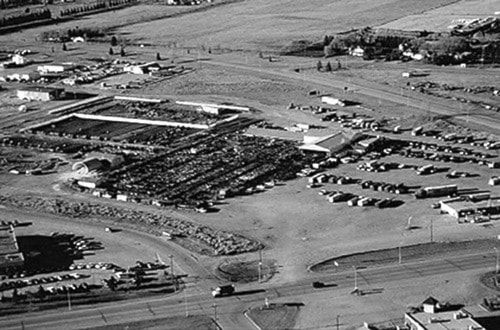The long-standing and extremely successful cattle industry in our province likely had its humble beginnings in the late 18th century when hundreds of settler families began invading the lush and rolling prairies of western Canada. Eager to start a new home in ‘the promised land’ they came from far and wide by wagon train or on rumbling railway cars, bringing only their most precious belongings and a few head of their best livestock.
As they began setting up their homesteads and building their homes and barns they would also require sturdy fences so that they could allow their herds to graze on the rich grasses. In those challenging early days the cows were vital to supply meat and milk to these large and growing families, as well as the substantial income after they were shipped to market to assure that these hardy settlers could purchase the supplies, equipment, feed and all that was needed to survive and thrive in the challenging and often harsh Alberta climate. In our colourful area history books it tells us that cattle going to slaughter in the late 1800s would bring from $5.00 to $36.00 each, but the returns would increase at a steady pace when the demand for the product reached epic proportions as our Province and Nation zoomed into the 19th century.
It has been told that on the rolling prairies of southern Alberta around the Calgary area there were cow/calf herds numbering over 5,000 roaming free with only a brand to identify the owner. It was certainly there that the year-round dedicated skills of the rugged ranch-hands were displayed and became so vital in keeping them safe and thriving. As the Ponoka area welcomed a steady stream of new farmers and ranchers into the rural districts, many new cattle herds were established, and massive livestock operations such as the Archibald Family Clearview Ranch in the Wolfville district (1910) and the Wintering Place in Wilmot (1907) would lead the way for countless others.
As the herds grew rapidly and when the prime animals were ready they would join the always tough cattle drive into town and were loaded onto the Canadian Pacific Railway cars to be shipped to market, or were sold at local auction by some of our first and very colourful auctioneers. Before the 1930s a top-notch critter could likely realize a good price of $150.00, but then when the dreaded depression hit that would tumble to $15.00 and times were tough for everyone for several years. But these determined pioneers rebounded quickly, with many of our district farm and ranch families introducing and working with such long-standing cattle breeds as Aberdeen Angus, Charlois, Shorthorns, Herefords, Limousine, Blonde D. Aquitaine, Simmental, and others to their existing herds. Along the way performance-tested bulls from various breeds were sought for their desirable characteristics and introduced to the herds, and the resulting offspring have produced top quality and hardy world class herds for ongoing decades. Feedlots to accommodate from 200 to 25,000 head of cattle were also introduced in all regions to provide the final vital steps to the development of the animals to increase weight and assure the top performance and value. There are currently 60,000 cow/calf farms across Canada supporting a total herd in excess of five million head and counting.
The town and county have always responded to the importance and success of the cattle industry in a big way, forming Livestock Co-ops, as well welcoming the many businesses and professional services and staff that are required to make it all come together and operate smoothly. In 1955 Gordon Stretch opened the first major auction market in the Ponoka area at the present Highway 2A and Highway 53 location, which was taken over in 1957 by Ralph and Harry Vold and partners Bill and Shorty Jones. The ongoing scale and efficiency of the 30-acre VJV Auction facility has helped to make Ponoka a ‘Cattle Capital of Canada,’ with a present holding capacity of 8,000 head of livestock, as well as weekly Satellite Sales available to buyers throughout North America. Our cattle and livestock industry has also reached out to the youth of our community with the organization and keen support of countless year-round 4-H clubs and activities, as well as through the ongoing sponsorships of so many worthwhile projects in and around Ponoka.
Many generations of dedicated Ponoka district families have proudly carried on their livestock operations and the raising of specialized cattle for decades, and on countless occasions their efforts have saluted them with coveted awards and recognition at provincial and international competitions, as well as attracting prospective clients and buyers from throughout the world. They have and will always work and promote together the fact that there is absolutely nothing better than ‘Alberta Beef.’
